Discovering The Divine: 9 Shiva Temples You Should Visit In India
By: Priyanka Maheshwari Wed, 31 May 2023 2:42:12
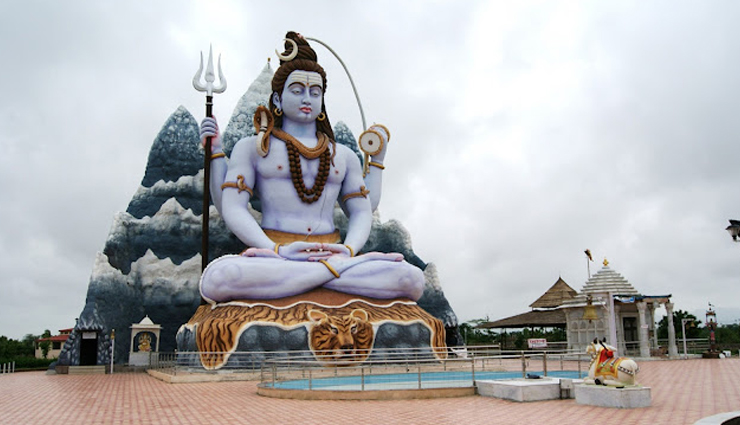
India, renowned as the spiritual nation, has a plethora of temples devoted to various gods and goddesses. The temples devoted to Lord Shiva are particularly significant. Lord Shiva, the embodiment of force, destruction, and creation, is worshipped by millions of worshippers across the country. This article will look at 9 Shiva temples in India that are famous for their architectural splendour, spiritual atmosphere, and cultural significance.
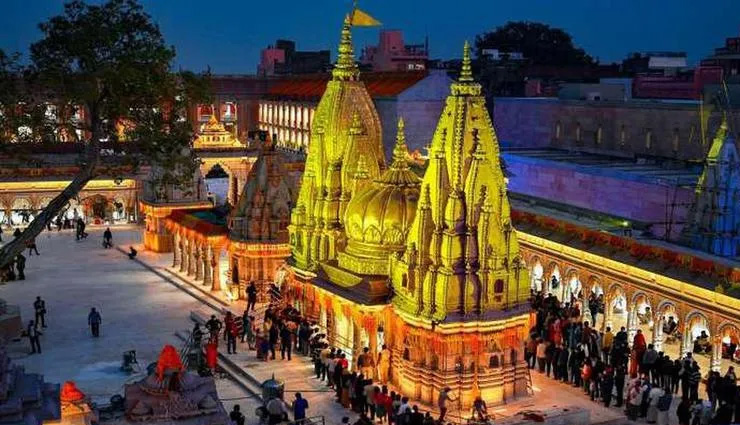
# Kashi Vishwanath Temple, Varanasi
The Kashi Vishwanath Temple in Varanasi, Uttar Pradesh, is one of India's most respected and historic Lord Shiva temples. It is extremely important in Hindu mythology and draws millions of worshippers from all over the world. Let's explore further into the Kashi Vishwanath Temple's history, architecture, and spiritual importance.
History:
The temple's history dates back thousands of years, with the original structure believed to have been built by Lord Shiva himself. However, the temple has undergone several renovations and reconstructions over the centuries due to invasions and destruction. The current temple was built in the 18th century by the Maratha ruler, Maharani Ahilyabai Holkar of Indore.
Architecture:
The Kashi Vishwanath Temple is a masterpiece of North Indian architecture. Lord Vishwanath (another name for Lord Shiva) is ensconced in the sanctum sanctorum, which is located in the centre of the temple complex. The temple's facade features elaborate carvings and sculptures portraying many mythical stories and deities.
The temple complex includes a number of minor shrines devoted to various deities, such as Goddess Annapurna and Lord Dhandapani (Lord Murugan). The Gyanvapi Well, located within the temple complex, is considered holy and carries enormous spiritual value.
Spiritual Significance:
For Hindus, the Kashi Vishwanath Temple is extremely sacred. It is said that visiting this temple will offer you moksha (freedom from the cycle of birth and death). Devotees worship, execute rituals, and seek Lord Vishwanath's blessings in order to achieve spiritual enlightenment and heavenly favour.
The temple is also one of the twelve Jyotirlingas (divine manifestations of Lord Shiva). It is said that Lord Shiva himself stays at the Kashi Vishwanath Temple, making it one of the holiest pilgrimage places for Shiva followers.
Festivals:
During numerous Hindu holidays, the Kashi Vishwanath Temple comes alive with activities. The Mahashivaratri festival, which honours Lord Shiva, is observed with tremendous zeal and devotion. Devotees pour into the temple, giving prayers and keeping nightly vigils, reciting hymns and executing specific rites.
Visiting the Temple:
Devotees and visitors are required to follow certain customs and dress codes when visiting the Kashi Vishwanath Temple. The temple's management ensures the maintenance of order and sanctity within the premises.

# Amarnath Temple, Jammu and Kashmir
The Amarnath Temple is one of India's most famous and old Hindu temples, located in the picturesque Himalayan area of Jammu and Kashmir. It is extremely sacred to Lord Shiva followers and draws millions of pilgrims from all over the world each year. Let's look at the Amarnath Temple's history, mysticism, and distinctive characteristics.
History:
The Amarnath Temple's history is linked with Hindu mythology and extends back thousands of years. It is said to be the cave where Lord Shiva imparted to his celestial consort, Goddess Parvati, the mysteries of immortality and the creation of the cosmos. Legend has it that Lord Shiva departed his corporeal body here, converting into an immortal Lingam (a phallic symbol signifying Lord Shiva's holy force).
Spiritual Significance:
For Hindus, particularly worshippers of Lord Shiva, the Amarnath Temple is one of the most important pilgrimage locations. The naturally created ice Lingam, which is believed to represent Lord Shiva, is the temple's principal feature. It is thought to wax and wane with the moon's phases, reaching its peak on the auspicious day of Raksha Bandhan.
The trek to the Amarnath Temple is known as the Amarnath Yatra, and it is a difficult pilgrimage that people make every year. Trekking across harsh mountain terrain, frigid temperatures, and unexpected weather conditions are all part of the yatra. Those who undergo this difficult path with unflinching faith and devotion are said to be blessed with Lord Shiva's heavenly favour.
The pilgrimage season at the Amarnath Temple begins in July and lasts around 45 days, corresponding with the Hindu month of Shravan. During this time, worshippers crowd the cave and surrounding surroundings, singing prayers, performing rituals, and seeking favours.
Unique Features:
Apart from the natural ice Lingam, the Amarnath Cave is also home to several other fascinating ice formations that are revered by devotees. These include the images of Goddess Parvati, Lord Ganesha, and Lord Shiva's trusted vehicle, Nandi, which are said to appear magically in the cave.
Visiting the Temple:
Due to the challenging terrain and weather conditions, visiting the Amarnath Temple requires careful planning and preparation. The pilgrimage typically starts from the base camp at Baltal or Pahalgam, and devotees have the option to trek or take a helicopter ride to reach the cave.
The Amarnath Temple management and the local authorities make arrangements for the safety and convenience of the pilgrims during the yatra. Facilities such as medical aid, accommodations, and food services are provided along the route to ensure a smooth and secure pilgrimage experience.
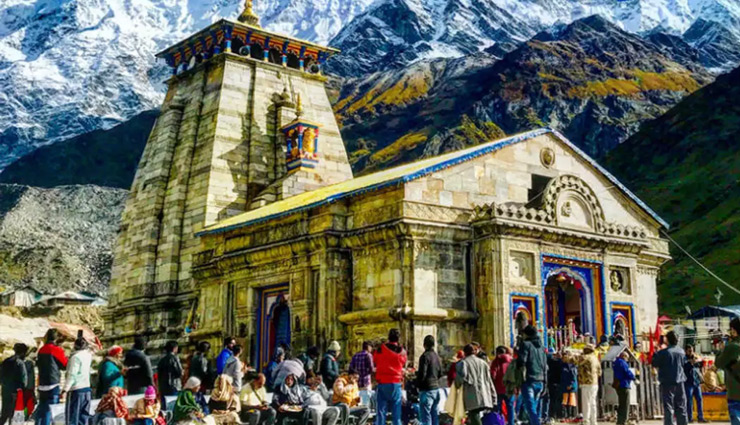
# Kedarnath Temple, Uttarakhand
The Kedarnath Temple, located in Uttarakhand, India's gorgeous Garhwal Himalayas, is one of the most respected and oldest Hindu temples devoted to Lord Shiva. It is one of the twelve Jyotirlingas, or celestial manifestations of Lord Shiva, and is located at an elevation of 3,583 metres (11,755 feet). Let us investigate the Kedarnath Temple's history, spirituality, and significance.
History:
The Kedarnath Temple has its roots in ancient Hindu texts and tales. According to legend, the Pandavas, the heroic protagonists from the Indian epic Mahabharata, built the temple as an act of penance to ask forgiveness for the slaughter during the conflict. The temple has a history that extends back over a thousand years.
Architecture:
The Kedarnath Temple exemplifies the regional architectural style, which is characterised by stone and timber constructions. The temple complex comprises the main shrine, dedicated to Lord Kedarnath (another name for Lord Shiva), as well as other minor shrines devoted to Hindu mythological deities. The exquisite sculptures on the temple's walls and pillars represent the region's rich cultural heritage.
Spiritual Significance:
The Kedarnath Temple holds immense spiritual significance for Hindus, especially devotees of Lord Shiva. It is considered one of the holiest pilgrimage sites and is believed to be the place where Lord Shiva granted salvation to the Pandavas. The temple is also considered a part of the Char Dham Yatra, which comprises four sacred pilgrimage sites in Uttarakhand.
The trek to the Kedarnath Temple is known for its challenging nature, traversing through breathtaking mountain landscapes and offering panoramic views of the Himalayas. Devotees undertake this arduous journey with unwavering faith and devotion, seeking blessings and spiritual enlightenment from Lord Kedarnath.
Pilgrimage Season and Festivals:
The Kedarnath Temple remains open for six months each year, from April/May to October/November, during the summer and autumn seasons. The temple is accessible only by foot or on horseback, as vehicles are not allowed beyond a certain point.
During the pilgrimage season, various religious rituals and festivals are celebrated at the Kedarnath Temple. The most important festival is the Kedarnath Mahotsav, which marks the temple's opening and closing dates. Devotees from all over the world gather to participate in the festivities, which include cultural performances, religious ceremonies, and processions.
Preservation and Restoration:
Following the disastrous floods and landslides in 2013, the Kedarnath Temple has undergone substantial restoration and preservation work in subsequent years. The government and numerous organisations collaborated to renovate and fortify the temple complex, assuring its structural stability and safety.
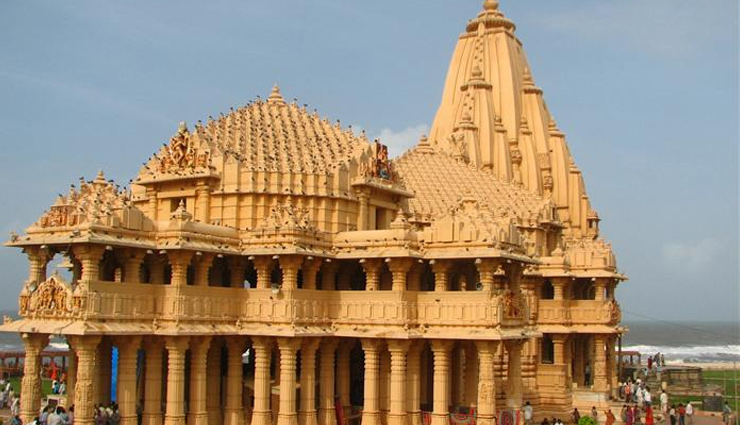
# Somnath Temple, Gujarat
The Somnath Temple at Prabhas Patan, near Veraval in Gujarat, is one of India's most important and respected pilgrimage sites. As one of the twelve Jyotirlingas (divine manifestations of Lord Shiva), it is of enormous religious and historical significance. Let us investigate the Somnath Temple's history, spirituality, and distinctive qualities.
History:
The Somnath Temple has a long history dating back several centuries. It is said to have been created by the Moon God, Lord Soma, and afterwards rebuilt by numerous monarchs and worshippers. Throughout history, the temple has been destroyed and rebuilt several times owing to invasions and natural disasters. Despite these difficulties, it has become a symbol of perseverance and commitment.
Spiritual Significance:
For Hindus, especially worshippers of Lord Shiva, the Somnath Temple bears significant spiritual significance. It is regarded to be the first of the twelve Jyotirlingas and is one of India's holiest pilgrimage destinations. The temple honours Lord Somnath, another name for Lord Shiva, and represents the divine's perpetual strength and presence.
The sanctum sanctorum of the temple holds the Shiva lingam, which is considered to be self-manifest and capable of showering blessings and fulfilling worshippers' requests. The temple complex's quiet and spiritual ambiance fosters a setting suitable to prayer, meditation, and seeking heavenly favour.
Unique Features:
The Somnath Temple features outstanding architectural and creative genius. The existing edifice, built in the Chalukya style, is a testament to Gujarat's rich cultural legacy. Other shrines, mandapas (halls), and prayer halls are part of the temple complex. The temple's shikhara (tower) and kalash (pinnacle) are magnificent instances of architectural splendour.
The Somnath Temple's strategic placement near the Arabian Sea is one of its distinguishing qualities. Devotees may enjoy spectacular views of the dawn and sunset, providing a serene and awe-inspiring ambiance. The temple's gorgeous surroundings add to its spiritual atmosphere and attraction.
Festivals and Celebrations:
The Somnath Temple hosts various festivals and celebrations throughout the year, attracting devotees from different parts of the country. The most significant festival is Mahashivaratri, a night dedicated to Lord Shiva. Devotees gather in large numbers, offer prayers, and participate in religious rituals and cultural programs.
Other festivals celebrated with enthusiasm at the temple include Kartik Purnima, Shravan Maas (the holy month of Shravan), and Prabhas Patan Utsav. These celebrations add vibrancy and liveliness to the temple complex, providing devotees with an opportunity to immerse themselves in devotion and revel in the divine festivities.
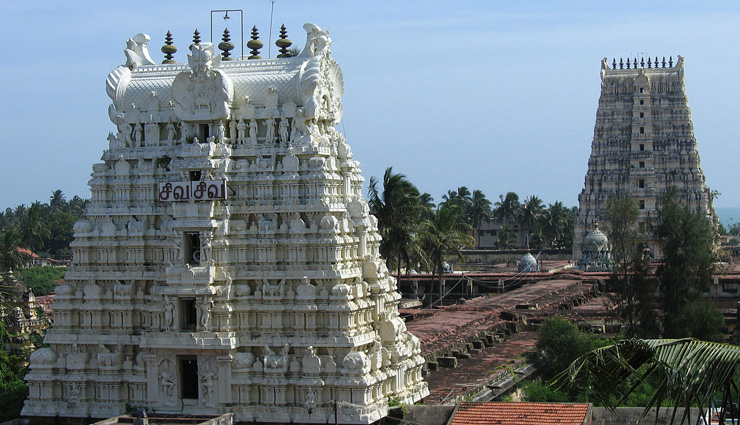
# Rameshwaram Temple, Tamil Nadu
The Rameshwaram Temple, located on the island of Rameshwaram in Tamil Nadu, India, is one of the most revered Hindu pilgrimage sites in the country. It is dedicated to Lord Shiva and holds great religious significance for devotees. Let's explore the history, spirituality, and unique features of the Rameshwaram Temple.
History:
The history of the Rameshwaram Temple dates back to ancient times and is closely associated with the epic Ramayana. According to Hindu mythology, Lord Rama, along with his consort Sita and his devotee Hanuman, worshipped Lord Shiva at this very spot before embarking on their journey to Lanka to rescue Sita from the demon king Ravana. It is believed that Lord Rama built a bridge from Rameshwaram to Lanka, known as Ram Setu or Adam's Bridge, with the help of his Vanara (monkey) army.
Architecture:
The Rameshwaram Temple showcases magnificent Dravidian architecture, characteristic of the Tamil Nadu region. The temple complex sprawls over a vast area and consists of multiple intricately carved gopurams (towering gateways), mandapas (halls), and prakarams (enclosures). The architecture reflects the grandeur and artistic brilliance of the Chola and Pandya dynasties that ruled the region.
The most notable feature of the temple is the 22 holy teerthams (water bodies) within the complex. It is believed that taking a dip in these teerthams before entering the main shrine purifies the soul and washes away sins.
Spiritual Significance:
The Rameshwaram Temple is considered one of the Char Dhams (four sacred pilgrimage sites) for Hindus. It is believed that a pilgrimage to Rameshwaram is essential for achieving moksha (liberation) and attaining spiritual enlightenment. The temple is dedicated to Lord Rameshwaram, another name for Lord Shiva, and houses the famous Rameshwaram Jyotirlinga, one of the twelve Jyotirlingas.
Devotees flock to the Rameshwaram Temple to seek blessings and perform religious rituals, including offering prayers, performing abhishekams (ritual bathing of the deity), and participating in aarti (devotional rituals). The temple holds a deep spiritual connection and is believed to grant devotees' wishes and bestow divine grace.
Rituals and Festivals:
The Rameshwaram Temple is known for its elaborate rituals and vibrant festivals. The most significant festival celebrated here is Maha Shivaratri, dedicated to Lord Shiva. Devotees throng the temple, engaging in night-long vigils, fasting, and participating in special prayers and rituals.
Other important festivals celebrated at the temple include Navratri, Panguni Uthiram, and Arudra Darshan. These festivals attract a large number of devotees, adding color, joy, and a festive atmosphere to the temple complex.

# Mahakaleshwar Temple, Madhya Pradesh
The Mahakaleshwar Temple, located in Ujjain, Madhya Pradesh, is one of the most revered and ancient Hindu temples in India. It is dedicated to Lord Shiva and holds great spiritual significance for devotees. Let's explore the history, spirituality, and unique features of the Mahakaleshwar Temple.
History:
The history of the Mahakaleshwar Temple dates back several centuries. It is believed to have been built during the Paramara dynasty in the 11th century. The temple has undergone various renovations and expansions by different rulers and devotees over the years. It is said to be one of the twelve Jyotirlingas, which are considered divine manifestations of Lord Shiva.
Architecture:
The Mahakaleshwar Temple showcases exquisite architecture, blending Rajput and Maratha styles. The temple complex consists of multiple intricately carved mandapas (halls), spires, and courtyards. The prominent feature of the temple is its five-tiered shikara (tower), which is adorned with intricate sculptures and carvings.
The inner sanctum of the temple houses the lingam, the symbolic representation of Lord Shiva. The lingam is known as Mahakaleshwar, which means "Great Lord of Time." It is considered highly auspicious and attracts devotees from far and wide.
Spiritual Significance:
The Mahakaleshwar Temple holds immense spiritual significance for Hindus, particularly devotees of Lord Shiva. It is believed that a visit to the temple can grant liberation from the cycle of birth and death. The lingam is worshipped in different forms throughout the day, with specific rituals and offerings conducted during each time period.
The temple's spiritual ambiance, combined with the rhythmic chants of sacred mantras and the fragrance of incense, creates an atmosphere of devotion and divine energy. Devotees offer prayers, perform abhishekams (ritual bathing of the lingam), and participate in aarti (devotional rituals) to seek the blessings and grace of Lord Mahakaleshwar.
Bhasma Aarti:
One of the unique and captivating rituals performed at the Mahakaleshwar Temple is the Bhasma Aarti. This special aarti is conducted early in the morning, during which the lingam is covered with sacred ash (bhasma) and adorned with flowers and garlands. The aarti is accompanied by chanting of mantras and the resonating sounds of bells and conch shells. Witnessing the Bhasma Aarti is considered a divine experience and is believed to bring immense spiritual bliss to devotees.
Festivals:
The Mahakaleshwar Temple celebrates several festivals with great fervor and enthusiasm. The most prominent festival is Mahashivaratri, the night dedicated to Lord Shiva. Devotees from far and wide gather at the temple to participate in special prayers, rituals, and cultural performances. Other festivals such as Navratri and Kartik Purnima are also celebrated with devotion and grandeur.
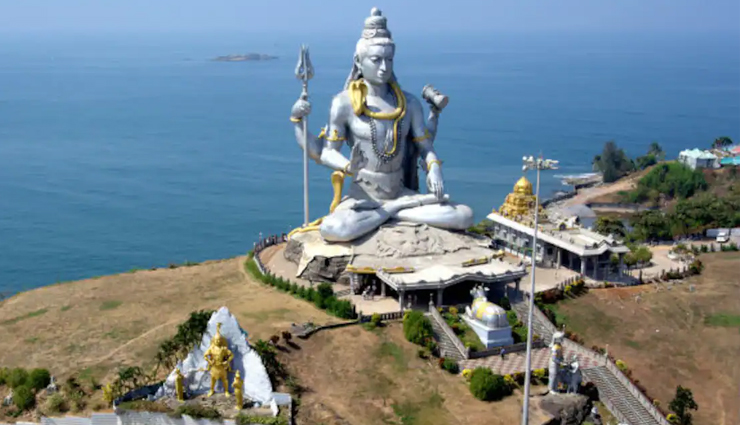
# Murudeshwar Temple, Karnataka
The Murudeshwar Temple, located in the Karnataka coastal town of Murudeshwar, is a popular Hindu pilgrimage destination devoted to Lord Shiva. It is famous for its magnificence, architectural beauty, and spiritual importance. Let's look at the Murudeshwar Temple's history, spirituality, and distinctive qualities.
History:
The Murudeshwar Temple has its roots in Hindu mythology and reaches back to ancient times. According to tradition, Lord Shiva emerged and materialised as a Lingam (symbolic representation) at this exact location. The temple is claimed to have been built on the place where Lord Rama conducted penance after defeating the evil king Ravana.
Architecture:
The Murudeshwar Temple showcases a blend of traditional Dravidian and modern architectural styles. The temple complex boasts a towering gopuram (gateway) standing at an impressive height of 249 feet (76 meters), which is one of the tallest in South India. The gopuram is adorned with intricate carvings, sculptures, and depictions from Hindu mythology.
One of the most striking features of the temple is the colossal Shiva statue situated adjacent to the main temple. This towering statue of Lord Shiva, known as the "Lord Shiva statue of Murudeshwar," stands at a height of 123 feet (37 meters) and is a sight to behold. It is the second tallest statue of Lord Shiva in the world, drawing awe and admiration from visitors.
Spiritual Significance:
The Murudeshwar Temple holds immense spiritual significance for devotees of Lord Shiva. The temple is dedicated to Lord Murudeshwar, another name for Lord Shiva, and is considered a sacred place of worship. The Lingam at the sanctum sanctorum of the temple is believed to be self-manifested and holds great divine power.
Devotees visit the temple to seek blessings, offer prayers, and perform rituals like abhishekam (ritual bathing of the Lingam) to attain spiritual growth, peace, and fulfillment. The serene ambiance, the sound of Vedic chants, and the fragrance of incense create an atmosphere conducive to deep devotion and spiritual reflection.
Beach and Scenic Views:
The Murudeshwar Temple is situated on a picturesque coastline, offering breathtaking views of the Arabian Sea. The temple complex is nestled between the scenic hills and the vast ocean, creating a serene and tranquil environment for devotees and visitors. The pristine beach nearby attracts tourists who wish to relax, unwind, and enjoy the natural beauty of the surroundings.
Festivals and Celebrations:
The Murudeshwar Temple celebrates various festivals with great enthusiasm. The most significant festival is Maha Shivaratri, dedicated to Lord Shiva. Devotees gather in large numbers, engaging in prayers, fasting, and participating in vibrant processions and cultural performances.
Other festivals celebrated at the temple include Navratri, Karthik Purnima, and Deepavali. These celebrations bring vibrancy, joy, and a sense of unity among devotees.
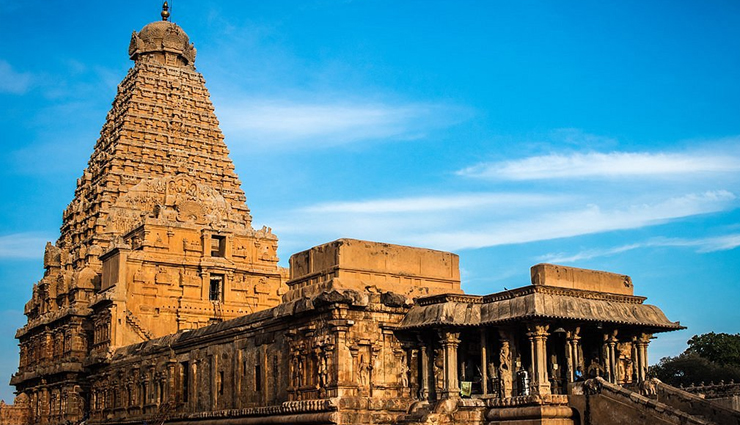
# Brihadeeswarar Temple, Tamil Nadu
The Brihadeeswarar Temple is a majestic Hindu temple in Thanjavur, Tamil Nadu, India. It is also known as the Peruvudaiyar Kovil or the Big Temple. It is a UNESCO World Heritage Site and a spectacular architectural marvel built during the reign of the Chola dynasty in the 11th century. Let us investigate the Brihadeeswarar Temple's history, architecture, and spiritual importance.
History:
The famous Chola ruler, Raja Raja Chola I, commissioned the Brihadeeswarar Temple in the early 11th century. It was devoted to Lord Shiva and functioned as the Chola dynasty's royal temple. The temple was built to commemorate the emperor's triumph over his adversaries and to display the Chola empire's might and majesty.
Architecture:
Brihadeeswarar Temple is famous for its magnificent Dravidian architecture and enormous granite construction. The temple is a testament to the Chola dynasty's architectural prowess. The temple's most notable feature is its high vimana (tower), known as the Brihadeeswarar or Periya Kovil, which stands around 216 feet (66 metres) tall.
The temple complex has a wide courtyard, a pillared hall, and several smaller shrines devoted to various deities. Intricate carvings and sculptures represent legendary scenes, gods, goddesses, and heavenly entities on the vimana. The temple's outside walls have intricate inscriptions that provide unique insights into the Chola dynasty's history, culture, and governance.
Spiritual Significance:
The Brihadeeswarar Temple holds immense spiritual significance for devotees of Lord Shiva. It is considered one of the most sacred and powerful Shiva temples in South India. The main sanctum of the temple houses a massive Lingam, known as Brihadeeswarar, which represents Lord Shiva.
Devotees visit the temple to seek blessings, offer prayers, and participate in various rituals and festivals. The temple is believed to be a source of divine energy and is said to grant devotees' wishes and bestow spiritual upliftment and prosperity.
Festivals and Celebrations:
The Brihadeeswarar Temple celebrates several festivals throughout the year, attracting a large number of devotees and tourists. The most significant festival is the Maha Shivaratri, dedicated to Lord Shiva, where devotees engage in day-long prayers, fasting, and night vigils. The temple also hosts various cultural programs, music, and dance performances during these festivities.
Other important festivals celebrated at the temple include Arudra Darshan, Annabhishekam, and the Tamil New Year, among others. These celebrations add vibrancy and a sense of devotion to the temple atmosphere.

# Lingaraja Temple, Odisha
The Lingaraja Temple in Bhubaneswar, Odisha's capital city, is one of India's most important and respected Hindu temples. The Lingaraja Temple, dedicated to Lord Shiva, is a masterpiece of Kalinga architecture and bears tremendous historical, architectural, and spiritual significance. Let us investigate the Lingaraja Temple's history, architecture, and spiritual importance.
History:
The Lingaraja Temple dates back to the 11th century, during the rule of the Somavamshi dynasty. It is thought to have been built by the monarch Jajati Keshari and afterwards enlarged by subsequent successors. The term "Lingaraja" refers to the merger of Lord Shiva as the Linga (symbolic representation of divine force) and Lord Vishnu as the Raja (king), emphasising the deities' harmonious cohabitation.
Architecture:
The Lingaraja Temple exemplifies the Kalinga style's architectural brilliance, with its astounding height, complex carvings, and richly carved doorway (gopuram). The temple complex is around 250,000 square feet in size and includes the main shrine, a vast gathering hall (Jagamohan), and other lesser shrines devoted to different deities.
The main temple structure, built using sandstone and laterite, reaches a height of around 180 feet (55 meters). It features a prominent spire (shikara) adorned with decorative motifs and sculptures. The temple's exterior is embellished with intricate carvings depicting gods, goddesses, mythical creatures, and scenes from Hindu epics.
Spiritual Significance:
The Lingaraja Temple holds immense spiritual significance for devotees of Lord Shiva. It is believed to be one of the most sacred places of worship for Shaivites. The main sanctum of the temple houses a Shiva Linga, known as Harihara Linga, which represents the combined form of Lord Shiva and Lord Vishnu.
Devotees visit the temple to seek blessings, offer prayers, and participate in various rituals and festivals. The temple follows strict rituals and practices, and only Hindus are allowed to enter the inner sanctum. The vibrant atmosphere, rhythmic chants, and fragrance of incense create an aura of devotion and spirituality within the temple premises.
Festivals and Celebrations:
The Lingaraja Temple celebrates several festivals with great enthusiasm and fervor. The most significant festival is Mahashivaratri, dedicated to Lord Shiva. Devotees from far and wide gather at the temple to participate in special prayers, rituals, and cultural performances.
Other important festivals celebrated at the temple include Ratha Yatra, Chandan Yatra, and Kartik Purnima. These festivals attract a large number of devotees and offer a glimpse into the rich cultural heritage of Odisha.





